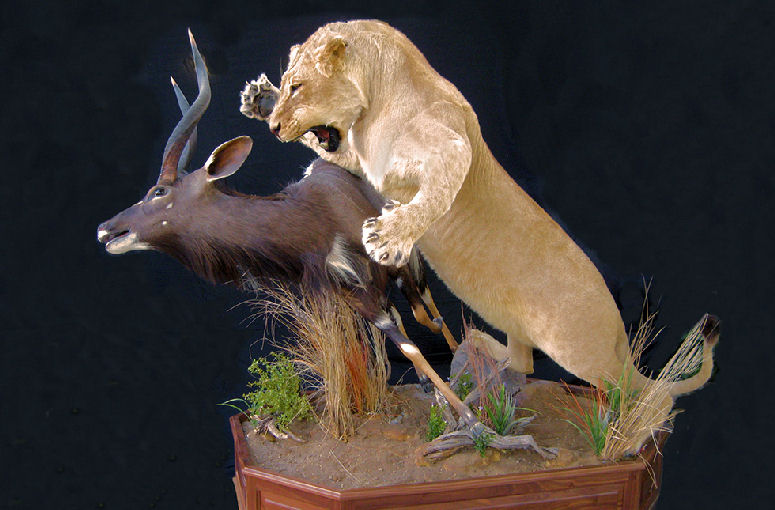101.WHAT IS TAXIDERMY?
The animals you see on exhibit in natural-history museums are the product of taxidermy. So are the reptiles and birds, and the fish that proud fishermen display on their walls. We think of them as “stuffed animals,” and in most cases, this is just what taxidermy involves.
Taxidermy is the art of mounting birds, animals, fish, and reptiles. It has been practiced for about 300 years, and the earliest “stuffed animal” in existence is a rhinoceros that was mounted in the sixteenth century.
When an animal is dead, its organs and other parts begin to decay. To preserve the animal so that it looks real and “alive,” the insides have to be removed. But the exterior of the bird, fish, or animal can be preserved. A taxidermist has the job of fitting this “outside” of the animal on a framework so that the color, texture, and general appearance will look natural.
Let’s see how taxidermy is performed with larger animals, such as a deer. As soon as the animal is collected, measurements are made of different parts of the body and the skin is carefully removed. The skin is well-salted to preserve it for shipping to the taxidermist’s studio. The flesh and muscles are cut away. The bones are cleaned and the entire skeleton is saved, if possible. The skin is tanned, or leathered, so it won’t crack and cause the hair to fall out.
What the taxidermist gets, therefore, is just the skin and bones of the animal, plus all careful measurements. He poses the skeleton in the position desired, holding it up with rods. Then wet modeling clay is applied over the skeleton. The taxidermist models the exact shape and size of the animal’s body in clay.
Then a plaster of Paris mold is made over the clay form. An artificial body is then made inside this mold. Finally, the tanned skin of the animal is fitted into place over the artificial body. Glass is used for eyes, and oil paints are used to restore faded colors. You then have an animal that looks natural and lifelike, ready to be exhibited! The mounting of birds, fish, and reptiles, is done differently, but the basic idea is the same.



Leave a Reply